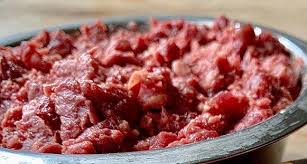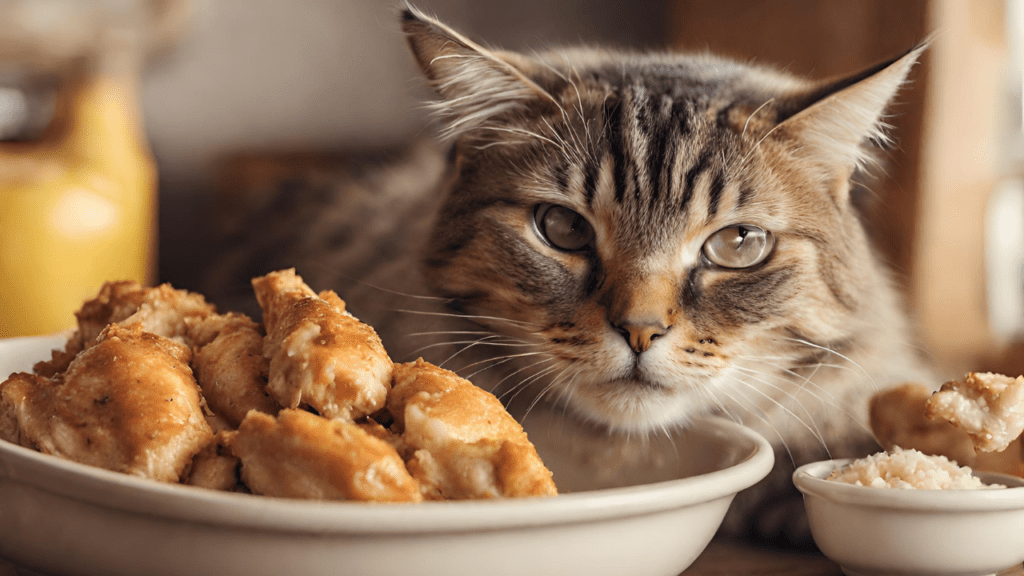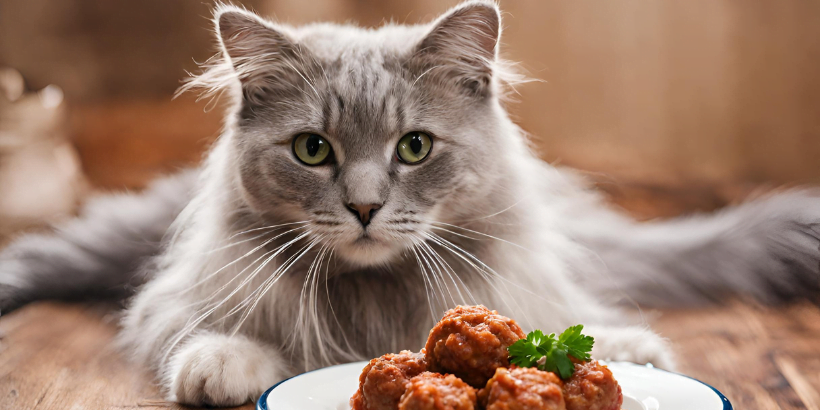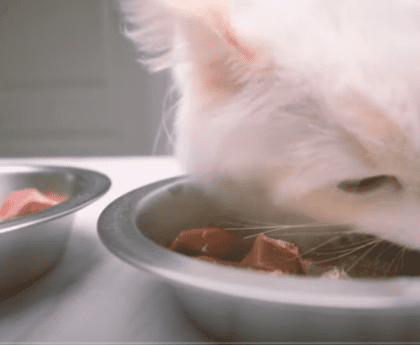Cats, like their wild ancestors, are obligate carnivores, which means their bodies thrive on a diet primarily composed of animal protein. Feeding cats a raw diet has gained popularity among pet owners who seek to provide their feline friends with a diet that closely mimics what they would eat in the wild. In this article, we’ll explore the benefits, risks, and considerations associated with feeding cats a raw diet, as well as how to transition to this dietary regimen.
- Benefits of a Raw Diet for Cats
- Risks and Considerations
- Transitioning to a Raw Diet
- Types of Raw Diets for Cats
- Homemade vs. Commercial Raw Cat Food
- Preparing a Homemade Raw Diet
- Selecting Commercial Raw Cat Food
- Common Misconceptions
- Raw Diet and Kittens
- Monitoring Your Cat’s Progress
- Common Challenges
- Safety and Hygiene
- What Is a Raw Diet for Cats?
- Why Consider a Raw Diet for Your Cat?
- Are Raw Food Diets Safe for Cats?
- Complete and Balanced Raw Food Diets
- How to Prepare a Raw Diet for Your Cat
- Commercial Raw Diets for Cats
- Raw Diet Alternatives
- Conclusion
- FAQs
Benefits of a Raw Diet for Cats
Improved Health
One of the primary advantages of a raw diet for cats is the potential for improved health. Cats on a raw diet often experience fewer digestive issues, allergies, and skin problems. This can lead to a happier and healthier feline companion.
Shiny Coat and Healthy Skin
A raw diet can contribute to a cat’s shiny coat and healthy skin. The high-quality proteins and fats found in raw meat can enhance your cat’s appearance and overall well-being.
Enhanced Energy Levels
Feeding your cat a raw diet may result in increased energy levels and improved vitality. This diet can provide the necessary nutrients to keep your cat active and playful.
Risks and Considerations
Nutritional Balance
Ensuring the nutritional balance of a raw diet is crucial. Cats require essential nutrients like taurine, which is commonly found in animal tissues. Failing to meet these nutritional requirements can lead to health issues.
Food Safety
Raw meat can carry bacteria that may be harmful to both cats and humans. It’s essential to handle raw meat with care, practicing good hygiene to prevent contamination.
Transitioning to a Raw Diet
Consult Your Vet
Before making any dietary changes, consult your veterinarian. They can offer guidance specific to your cat’s needs and health status.
Gradual Transition
Transitioning to a raw diet should be gradual. Start by mixing small amounts of raw food with your cat’s current diet and gradually increase the proportion of raw food.
Types of Raw Diets for Cats
There are two primary types of raw diets for cats:
Prey Model Raw (PMR)
PMR diets aim to replicate the natural prey that a cat would catch in the wild. They consist of whole prey animals, meat, organs, and bones.
Biologically Appropriate Raw Food (BARF)
BARF diets are more varied and may include fruits and vegetables in addition to meat. They aim to provide a holistic and balanced diet.
Homemade vs. Commercial Raw Cat Food
Pet owners can choose between preparing a homemade raw diet or purchasing commercial raw cat food.
Preparing a Homemade Raw Diet
Ingredients
For homemade raw cat food, you’ll need high-quality ingredients like lean meat, organs, and bone. It’s essential to include variety for a well-rounded diet.
Equipment
Invest in a good meat grinder, kitchen scale, and storage containers to prepare and store the food properly.
Recipes
Numerous homemade raw cat food recipes are available online. Follow a reliable recipe to ensure your cat’s nutritional needs are met.
Selecting Commercial Raw Cat Food
When choosing commercial raw cat food, consider the quality of the brands and read the labels to ensure it meets your cat’s nutritional requirements.
Common Misconceptions
Costs
Contrary to popular belief, feeding a cat a raw diet doesn’t necessarily cost significantly more than high-quality commercial cat food.
Time Commitment
While it may take some time to prepare raw food, the benefits to your cat’s health are well worth the effort.
Raw Diet and Kittens
Kittens can also thrive on a raw diet, provided it is carefully balanced to meet their specific nutritional needs.
Monitoring Your Cat’s Progress
Regularly assess your cat’s health and well-being. Ensure they are maintaining a healthy weight and experiencing no adverse effects from the diet.
Common Challenges
Fussy Eaters
Some cats may be finicky about raw food. Experiment with different proteins and preparations to find what your cat enjoys.
Transitioning Difficulties
Transitioning to a raw diet can be challenging. Be patient and consult your vet for advice if your cat is struggling with the change.
Safety and Hygiene
Maintaining strict safety and hygiene protocols when handling raw meat is essential to protect your cat and your family from potential health risks.
What Is a Raw Diet for Cats?
A raw diet for cats involves feeding them uncooked animal products, which can include muscle meat, organ meat, and bones. You might have heard of the “BARF” diet, standing for “bones and raw food” or “biologically-appropriate raw food.” This diet aims to mimic a cat’s natural diet in the wild, providing a nutritionally balanced and natural source of sustenance.
The ideal raw diet for your feline friend is prepared based on a carefully designed recipe.
While some cat owners prefer to prepare these diets themselves at home, commercial options are also available.
If you decide to go with a raw diet, ensure it has been vetted and approved by a veterinary nutritionist to prevent any health issues down the road.
Why Consider a Raw Diet for Your Cat?
Cats are obligate carnivores, meaning they require animal products to thrive.
Unlike humans, they don’t need vegetables and carbohydrates in their diet. Instead, they thrive on high-protein, high-moisture diets rich in meat-derived nutrients like taurine, fatty acids, and essential vitamins and minerals.
Raw food diets aim to preserve these vital substances by avoiding the cooking process, closely resembling what a cat would consume in the wild.
Proponents of raw food diets claim numerous benefits, such as shinier coats, cleaner teeth, obesity prevention, and overall improved health. While these claims hold merit, it’s essential to consider the opposing viewpoint regarding safety.
Are Raw Food Diets Safe for Cats?
Feeding your cat a raw diet comes with certain risks, primarily due to potential pathogens like Salmonella and E. coli that can cause severe infections. Cooking food generally eliminates these pathogens, which is why humans cook their food.
Cats, however, have shorter, more acidic digestive tracts, making them better equipped to handle raw food. Still, it’s crucial to consider cross-contamination in your home, which can expose you and your family to dangerous pathogens.
Raw diets may not be suitable for cats living with immune-compromised individuals, young children, or the elderly. To mitigate risks:
- Prepare the food in a contained area and sanitize thoroughly.
- Use gloves when handling raw meat.
- Opt for frozen meat when possible.
- Source meat from reliable suppliers.
- Choose an easy-to-clean feeding area.
- Sanitize food bowls immediately after use.
- Ensure bones are finely ground to prevent complications.
Complete and Balanced Raw Food Diets
One common mistake is not ensuring that a raw diet is complete and balanced.
Simply feeding “all meat and bones” or a variety of meats without attention to calorie, fat, protein, and nutrient content can lead to health issues for your cat. Remember that domesticated pets have longer life expectancies than wild animals due to their diet.
It’s advisable to follow vet-approved recipes for complete and balanced nutrition.
Consult your veterinarian for guidance on creating a well-rounded raw diet, and consider seeking a veterinary nutritionist with expertise in raw diets.
Although some veterinarians may not recommend raw diets due to potential risks, finding a flexible and experienced professional can help you navigate this choice.
How to Prepare a Raw Diet for Your Cat
It’s essential to find an expert to guide you in creating a complete and balanced diet.
Your veterinarian may recommend supplements to ensure your cat gets all the required nutrients.
Ingredients for a raw diet may include raw meat, raw ground bones, eggs, and supplements.
You’ll also need specific equipment like a meat grinder, cutting board, poultry shears, gloves, and storage containers.
Many cat owners prefer making larger batches of raw food and freezing it to save time. However, if this isn’t feasible for you, consider commercial raw diets.
Commercial Raw Diets for Cats
While commercial raw diets might be seen as less ideal compared to homemade options, they are still considered healthier than dry kibble. These diets are typically frozen or freeze-dried to reduce pathogen risks. Consult your veterinarian or a veterinary nutritionist to choose a commercial diet that meets AAFCO standards for completeness and balance.
Raw Diet Alternatives
If you want to avoid the risks associated with raw food but still provide your cat with an excellent diet, consider home-cooked cat food using a balanced recipe. Alternatively, select high-protein wet cat food made with quality ingredients, as many experts agree that dry kibble has too many carbohydrates for cats. Reducing or eliminating carbohydrates from your cat’s diet can lead to a longer, healthier life and prevent issues like obesity and diabetes mellitus.
Conclusion
Feeding your cat a raw diet can offer various benefits, including improved health, shiny fur, and increased energy levels.
However, it’s essential to be aware of the nutritional balance, food safety, and the gradual transition process.
Whether you choose to prepare a homemade raw diet or opt for commercial options, consult your veterinarian and monitor your cat’s progress for the best results.
FAQs
- Is a raw diet suitable for all cats?
- While many cats can thrive on a raw diet, it’s essential to consult your veterinarian to ensure it’s appropriate for your specific cat.
- How do I handle raw meat safely?
- Practice good hygiene, use separate utensils, and store raw meat properly to minimize the risk of contamination.
- Can I switch my cat to a raw diet at any age?
- Cats of all ages can transition to a raw diet, but consult your vet for guidance, especially for kittens and senior cats.
- What are some signs that my cat is thriving on a raw diet?
- Signs of success include improved coat condition, increased energy, and a healthy weight.
- Are there any risks to feeding cats a raw diet?
- The main risks are nutritional imbalances and food safety concerns. Address these issues to ensure your cat’s well-being.









